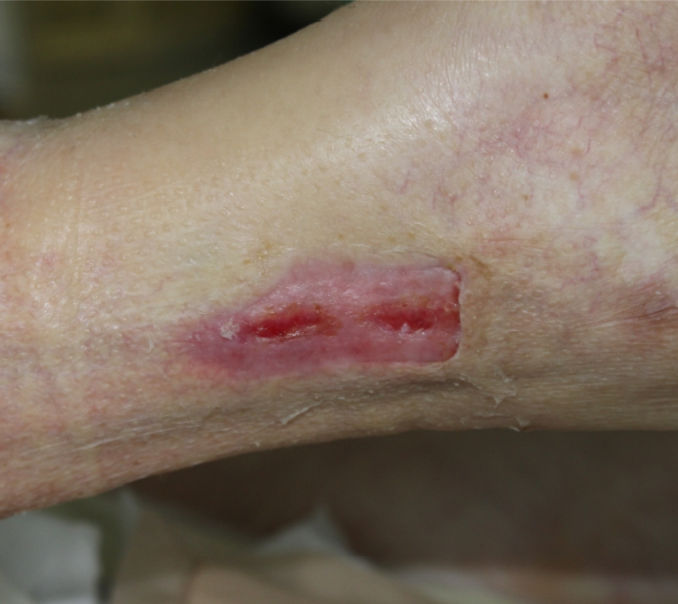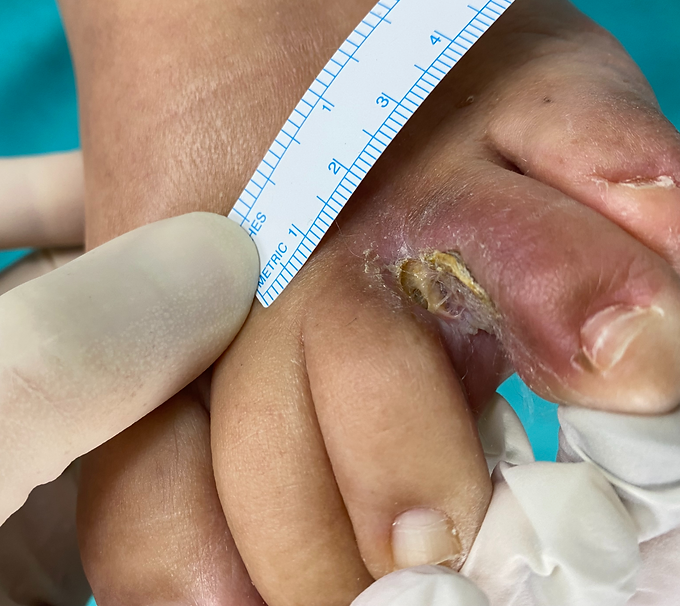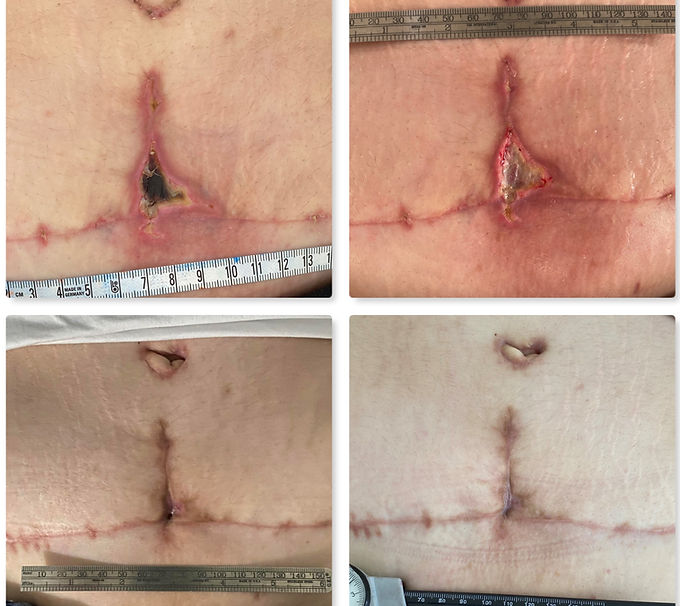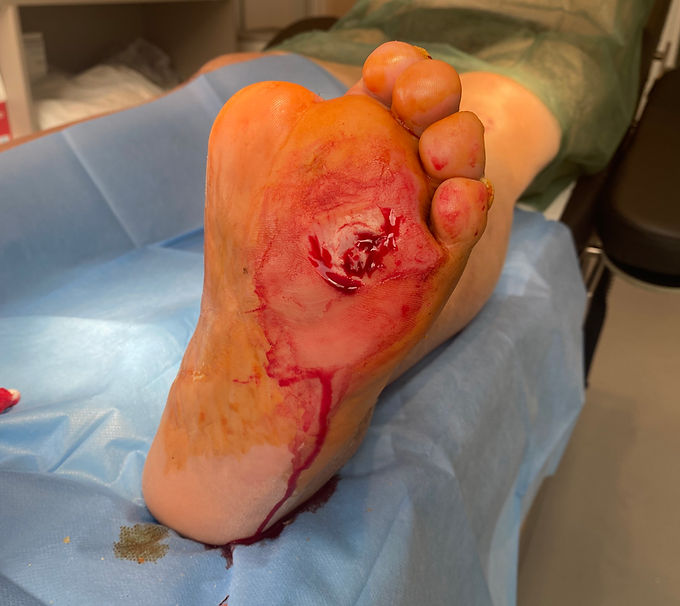
Clinical Results
HYPPP Therapy is a safe, clinically effective treatment for any type of dermal tissue damage, including for large, full thickness wounds that arise as a result of diabetes, microvascular pathology, burn injury or due to post-operative complications. Below are some indicative treatment results in various pathology categories.

Calcaneus Ulcer
A pressure ulcer developed within a muscle free flap that was transplanted to cover a large wound area following an RTA

HYPPP Therapy
Complete wound epithelialization following 3 months treatment with a local ointment containing 10% HYPPP protein factors

Peroneal wound ulcer
A large peroneal ulcer developed in a type 2 diabetic patient, comprising full thickness tissue damage and skin necrosis.

HYPPP Therapy
Complete wound epithelialization following surgical debridement, followed by 3 months treatment with a local ointment containing 10% HYPPP protein factors

Distal interdigital ulcer
A large peroneal ulcer developed in a type 2 diabetic patient, comprising full thickness tissue damage and skin necrosis

HYPPP Therapy
Complete wound epithelialization following surgical debridement, followed by 3 months treatment with a local ointment containing 10% HYPPP protein factors

HYPPP Therapy of post-operative wound healing complication in lower abdomen
A full-thickness skin necrosis developed in the lower abdomen following an abdominoplasty procedure in a smoker female patient. Complete wound healing was achieved by 3 months treatment with a local ointment containing 10% HYPPP protein factors

HYPPP Therapy of post-operative wound healing complication in upper thigh
A full-thickness skin necrosis developed in the upper thigh following a vertical thigh procedure in a smoker female patient. Complete wound healing was achieved by 3 months treatment with a local ointment containing 10% HYPPP protein factors

HYPPP Therapy of post-operative wound healing complication in upper thigh
A full-thickness skin necrosis developed in the upper thigh following a vertical thigh procedure in a smoker female patient. Complete wound healing was achieved by 3 months treatment with a local ointment containing 10% HYPPP protein factors

HYPPP Therapy of post-operative wound healing complication in nipple-areola complex
A full-thickness skin necrosis developed in the right nipple-areola complex following a vertical thigh procedure in a female patient. Complete wound healing was achieved by 3 months treatment with a local ointment containing 10% HYPPP protein factors

Post-operative wound healing complication in right breast
A full-thickness inflammatory skin necrosis developed in the right breast following a breast reduction procedure in a female patient.

HYPPP Therapy
Complete wound healing was achieved by 3 months treatment with a local ointment containing 10% HYPPP protein factors.

Post-operative wound healing complication in gluteal area
A large, bilateral full-thickness skin necrosis developed in the upper gluteal following a buttock-lift procedure in a smoker female patient.

HYPPP Therapy
Following surgical debridement, and a partially successful skin grafting procedure (partial graft take on right side, no graft take on left side), complete bilateral wound healing was achieved by 3 months treatment with a local ointment containing 10% HYPPP protein factors
.jpg)
Post-operative wound healing complication in abdominal area
A large full-thickness skin necrosis developed in the lower abdominal area following an abdominoplasty procedure in a smoker female patient.
.jpg)
HYPPP Therapy
Complete wound healing was achieved after surgical debridement, by 3 months treatment with a local ointment containing 10% HYPPP protein factors. The residual scar was surgically revised.

Diabetic Foot Ulcer
A large, full-thickness foot ulcer developed in a diabetic patient who previously had a great toe amputation due to similar pathology. Image shows the ulcer immediately after surgical debridement of the necrotic tissue.

HYPPP Therapy
Complete wound healing was achieved after surgical debridement, by 3 months treatment with a local ointment containing 10% HYPPP protein factors. The dry epithelium was later dermabraded for improved elasticity.
